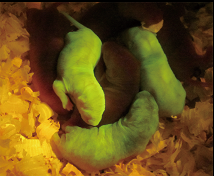New methods of enhancing efficiency of genetic engineering in mice and rats

A group of researchers led by Tomoji Mashimo, Associate Professor, Institute of Experimental Animal Sciences, Graduate School of Medicine, Osaka University and Kazuto Yoshitomi, Assistant Professor, Mouse Genomics Resource Laboratory, National Institute of Genetics, Research Organization of Information and Systems developed two new gene modification methods: lsODN (long single-stranded oligodeoxynucleotide) and 2H2OP (two-hit two-oligo with plasmid). These methods use CRISPR (Clustered Regularly Interspaced Short Palindromic Repeats) -Cas systems and ssODN (single-stranded oligodeoxynucleotide).
CRISPR-Cas systems have made gene modification in mice and rats easy. By introducing Cas9 messenger RNA and gRNA, gRNA recognizes targeting DNA and Cas9 cuts the targeting site. DNA breaks are repaired by non-homologous end joining, which causes DNA mutations, resulting in gene knock-out.
Likewise, when ssODN is introduced with Cas9-gRNA, DNA breaks are repaired through homology-directed repair using donor DNA, resulting in knock-in of DNA sequences with one to dozens of bases (bp). However, ssODN allowed the synthesis of oligos up to 200 bp, therefore, which made it difficult to knock in large DNA sequences such as GFP (green fluorescent protein).
With these two gene modification methods, this group succeeded in achieving efficient and precise knock-in of GFP genes, the introduction of large genomic regions (approx. 200kbp), which was conventionally impossible, as well as replacing rat genes with human-derived genes, or generating gene humanized animals.
These two knock-in methods will increase the efficiency of genetic engineering in mice and rats, as well as other various species of organisms, and will become very useful techniques for producing new genetically engineered organisms. It is highly anticipated that these genetically engineered organisms will be used in a wide field of studies such as drug development, translational research, and regenerative medicine.
More information: Kazuto Yoshimi et al. ssODN-mediated knock-in with CRISPR-Cas for large genomic regions in zygotes, Nature Communications (2016). DOI: 10.1038/NCOMMS10431
Journal information: Nature Communications
Provided by Osaka University




















